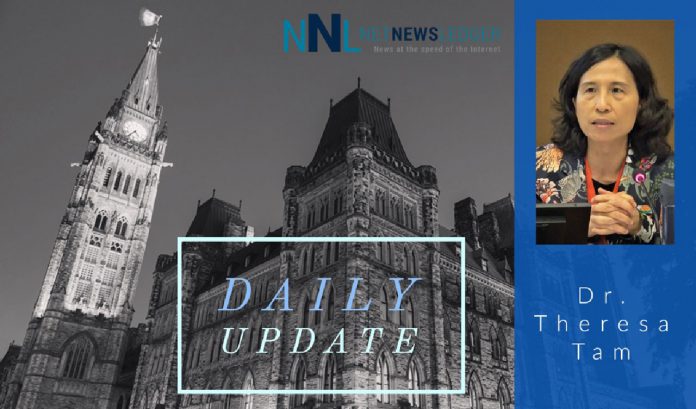OTTAWA – In lieu of an in-person update to the media, Dr. Theresa Tam, Canada’s Chief Public Health Officer, issued the following statement today:
“As the resurgence of COVID-19 activity continues in Canada, we are tracking a range of epidemiological indicators to monitor where the disease is most active, where it is spreading and how it is impacting the health of Canadians and public health, laboratory and healthcare capacity. The following is the latest summary on national numbers and trends, and the actions we all need to be taking to maintain COVID-19 at manageable levels across the country.
Since the start of the pandemic, there have been 320,719 cases of COVID-19, including 11,334 deaths reported in Canada; these cumulative numbers tell us about the overall burden of COVID-19 illness to date. Though the cumulative number is high and many areas are experiencing rapid growth, it is important to remember that the vast majority of Canadians remain susceptible to COVID-19. This is why it is important for everyone to continue with individual precautions to protect ourselves, our families and our communities.
At this time, there are 52,739 active cases across the country. The latest national-level data indicate daily averages of 4,739 new cases (Nov 13-19) and over 58,400 people daily, with 6.6% testing positive (Nov 8-14). Both community transmission and outbreaks are contributing to COVID-19 spread in Canada, including spread to high risk populations and settings. Cases are increasing among older adults, particularly those aged 80 years and older who currently have the highest incidence rate, nationally. More and larger outbreaks are occurring in long term care homes, congregate living settings and hospitals, and spreading in Indigenous communities. These developments are deeply concerning as they put countless Canadians at risk of life-threatening illness, cause serious disruptions to health services and present significant challenges for areas not adequately equipped to manage complex medical emergencies.
Across Canada, the number of people experiencing severe illness continues to increase. Provincial and territorial data, indicate that an average of 1,840 people with COVID-19 were being treated in Canadian hospitals each day during the most recent 7-day period (Nov 13-19), including 376 of whom were being treated in intensive care units. During the same period, there were an average of 71 COVID-19-related deaths reported daily. This situation is putting pressure on local healthcare resources and forcing hospitals to make the difficult decision to cancel elective surgeries and procedures in several areas of the country.
Yesterday, we provided an update on the Government of Canada’s epidemiology and modelling work that informs the ongoing management of COVID-19 in Canada. The Public Health Agency of Canada’s short-term modelling forecasts that we could have a total of between 366,500 and 378,000 cases and 11,870 to 12,120 deaths by November 30th. Longer range forecasting, using a model from Simon Fraser University, forecasts that if we continue to have our present number of contacts with people each day across the population, we could have 20,000 cases daily by the end of December. This is telling us that a stronger response is needed immediately, to interrupt transmission and slow the spread of COVID-19 across the country. Canada needs a collective effort, from individuals and public health authorities, to support and sustain the response through to the end of the pandemic, while balancing the health, social and economic consequences.
Given the recent developments, there is an urgent need for everyone to take individual actions to not only protect ourselves but also our populations and communities at high risk. To do this, we need to limit close contacts to those in your immediate household and reduce in-person interactions to only essential errands and activities, while consistently maintaining key public health practices: stay home/self-isolate if you have any symptoms, maintain physical distancing, wear a face mask as appropriate (including indoors with people from outside your immediate household), and keep up with frequent hand, cough and surface hygiene. Avoid the three C’s as much as possible: closed spaces with poor ventilation, crowded places where many people gather, and close contact situations where you cannot keep two metres apart. Importantly, please follow the guidance of your local public health authorities.
Canadians can also go the extra mile by sharing credible information on COVID-19 risks and prevention practices and measures to reduce COVID-19 in communities and by downloading the COVID Alert app to break the cycle of infection and help limit the spread of COVID-19.
What comes next for us this Fall and Winter is for every one of us to determine, through our decisions and actions. Every effort you can make matters. Let’s bring COVID-19 down, together! Read my backgrounder to access more COVID-19 Information and Resources on ways to reduce the risks and protect yourself and others.”







